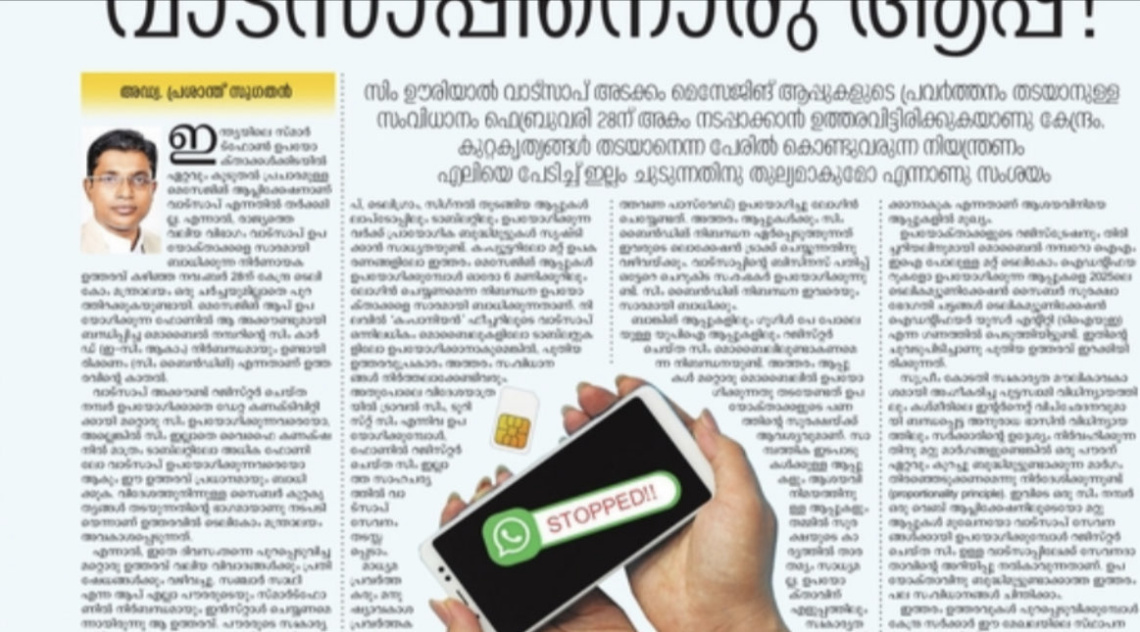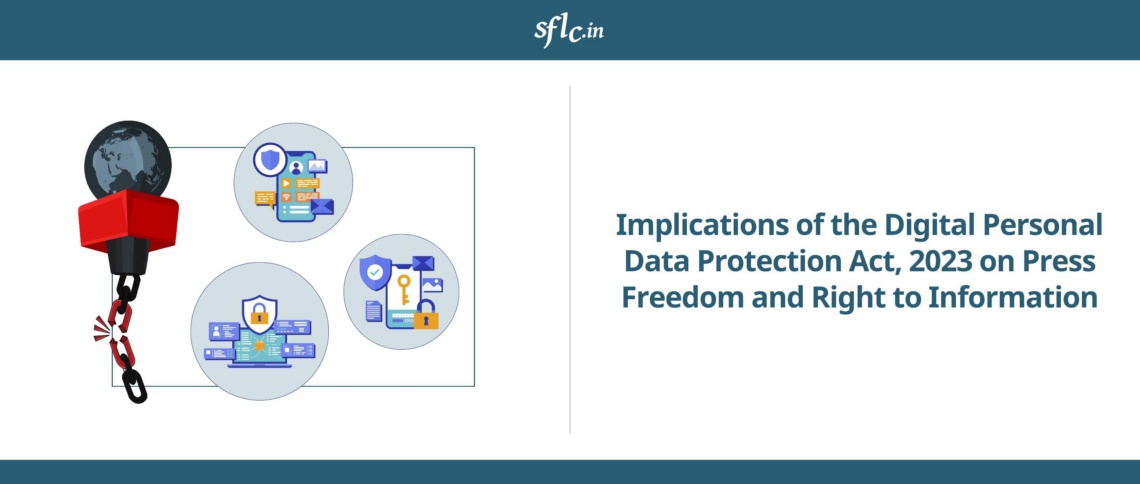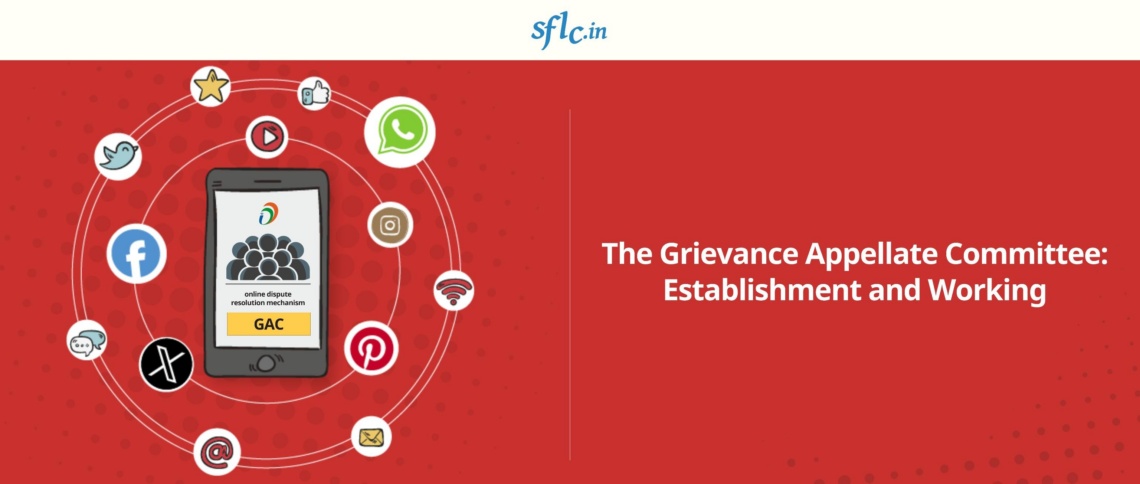Introduction
The consultation paper establishes the fact that the market of OTT services has expanded exponentially in the last few years giving rise to many new opportunities and challenges. The paper recommends that a policy needs to be framed regarding the regulation of the OTT sector.
The paper highlights the need to find an alternate solution against complete banning of Internet services in cases of public emergency which causes inconvenience to the general public and therefore proposes the method of selective banning of only those OTT services that are likely to be used by terrorists or anti-social elements.
The Department of Telecommunications (DoT) Committee Report on Net Neutrality in May 2015 had categorized OTT services into two groups:
(i) OTT communications services: These services, such as VoIP, enable real-time person-to-person telecommunication over the internet, utilizing the network infrastructure of licensed telecom service providers (TSPs). Essentially, OTT communications services compete with TSPs’ services by utilizing their existing infrastructure. Classic examples of OTT services are (video) telephony services and messengers such as Skype or WhatsApp.
(ii) OTT application services: This category includes other OTT services like media services (broadcasting, gaming), trade and commerce services (e-commerce, radio), cloud services (data hosting and management platforms/applications), and social media (intermediary applications like Facebook, YouTube). These services utilize the network infrastructure created by TSPs but don’t directly compete with the services offered by TSPs under their licensed operations governed by the Indian Telegraph Act, 1885.
The National Digital Communications Policy (NDCP) of 2018 aims to foster a comprehensive and harmonized approach to leverage emerging technologies. It promotes innovation in communication services and network infrastructure development, with a specific focus on formulating a policy framework for Over-the-Top (OTT) services. This strategy aligns with the objectives of the Propel India Mission, ensuring a conducive environment for technological advancements and the growth of OTT services in India.
Comments are invited by Stakeholders on the paper by 4th August 2023 and counter comments by 18th August 2023
Rules and Sections
The consultation paper looks at the following list of regulations in detail –
The section 5(2) of the Indian Telegraph Act, 1885 give the power to the Central government and the State Government or any person authorized on their behalf to direct that any message or class of messages to or from any person or class of persons, or relating to any particular subject, brought for transmission by or transmitted or received by any telegraph, shall not be transmitted, or shall be intercepted or detained, or shall be disclosed to the Government making the order or an officer thereof mentioned in the order. However, the power can only be exercised in the cases of any public emergency, or in the interest of the public safety.
The section 7(1) of the Indian Telegraph Act, 1885 provides as below: “(1) The Central Government may, from time to time, by notification in the Official Gazette, make rules consistent with this Act for the conduct of all or any telegraphs established, maintained or worked by the Government or by persons licensed under this Act.
In exercise of the powers conferred by section 7 of the Indian Telegraph Act, 1885, the Central Government notified the Temporary Suspension of Telecom Services (Public Emergency or Public Safety) Rules, 2017 to regulate the temporary suspension of telecom services due to public emergency or public safety.
Section 69 of the IT Act gives the power to the Government to intercept, monitor or decrypt any computer resource. This provision also lays down a penalty of imprisonment up to seven years for an intermediary who does not assist the Government in interception or monitoring. Further Section 69B of the IT Act also empowers the Government to monitor and collect traffic data or information through any computer resource for cyber security. (ii) Takedown obligations: Section 69A of the IT Act empowers the Government to issue directions to any intermediary for blocking public access of any information in any computer resource. The provision also prescribes a punishment of imprisonment up to seven years for any intermediary who fails to comply with the direction issued under it.
(iii) Privacy and cybersecurity obligation: Information Technology (Reasonable Security Practices and Procedures and Sensitive Personal Data or Information), 2011 requires every service provider to outline a detailed privacy policy that is applicable to all users, that articulates nature of data collected, type of data that is collected and for what purpose including retention and further use. Additionally, India has consumer protection laws, financial regulations, competition law that ensures different aspects of user interest are protected.
Further, Section 72 A of the IT Act provides for punishment for disclosure of information in breach of lawful contract. (iv) Intermediary liability: Rule 3(7) of the Information Technology (Intermediaries Guidelines), 2011 lays down a positive obligation on part of intermediaries like Internet Platforms and Services to comply with all lawful orders and render assistance to government agencies that are lawfully authorized.
Section 79 of the IT Act states that intermediaries are exempted from liability for third party information or communication links made available or hosted by them subject to certain conditions. This includes the condition that the intermediary must observe due diligence while discharging its functions. However, this exemption does not apply if (i) the intermediary has conspired or abetted or aided or induced the commission of an unlawful act; or (ii) upon receiving actual knowledge, or on being notified by the appropriate agency that any information, data or communication link controlled by the intermediary is being used to commit the unlawful act, the intermediary fails to expeditiously remove or disable access to that material. (v) Encryption obligations: Section 69 of the IT Act requires entities to abide by any order to decrypt a computer resource. Section 84A allows the Government to prescribe suitable modes or methods of encryption for promotion of e-commerce and e-governance in the country.
Proposed Method
Selective Banning of Services – The excerpt refers to Recommendation No. 14 from the 26th report of the Parliament’s Standing Committee on Communication and Information Technology1. The committee emphasized the importance of the Department (presumably the Department of Telecommunications) promptly evaluating the Telecom Regulatory Authority of India’s (TRAI) recommendation. The objective is to formulate a policy that facilitates the targeted restriction of certain Over-The-Top (OTT) services, such as Facebook, WhatsApp, and Telegram, using appropriate technological measures. This restriction would be applicable during times of unrest or crisis when these services might be exploited by terrorists, anti-national elements, or forces that aim to create turmoil in specific regions.
The Parliamentary Committee suggested that instead of shutting down the whole internet, only those services that are likely to be used by terrorists or anti-social elements should be blocked. The Committee wanted to know if this was technically possible. The Department has stated that as cloud-hosted services operate from several locations across several nations and continually switch between different services, it is challenging to selectively outlaw them. Such websites can be located and their access blocked using advanced procedures. Additionally, it’s possible that the targeted websites employ the HTTPS (Hypertext Transfer Protocol Secure) protocol. HTTPS protocol provides encryption and security for websites, making it difficult for service providers to block content on these sites. However, there are still ways to block or filter content at a network level, such as using a firewall or content filtering software. As far as area specific barring is concerned, it also needs to be carried out at network level, for which effective methods are required to be worked out.
Websites with fixed URLs, however, may be banned. The Committee believes it will be a huge relief if the Department can look into the possibility of banning specific services, like Facebook, WhatsApp, Telegram, etc., rather than the entire Internet. The general population will experience less inconvenience and suffering as a result of this, and it will also help to prevent the dissemination of false information during disruption. This will enable the continuation of business as normal in the provision of financial, health, educational, and other services.
The economy of a nation may be significantly impacted by the shutdown of telecommunications or the internet. Additionally, it interferes with essential services like healthcare and education. As a result, such a shutdown has an impact on the country’s residents’ quality of life. The UN Human Rights office reported that the costs to jobs, education, healthcare, and political participation almost usually outweigh any anticipated benefits.
For these reasons, selective blocking of particular OTT applications and websites, etc., that terrorists or anti-national groups may use to sow unrest in the targeted areas, appears preferable to total internet shutdown.
Arrangements between telecommunication network operators and OTT providers
In August 2020, ITU-T released recommendations on creating an enabling environment for voluntary commercial arrangements between telecommunication network operators and OTT providers. These recommendations acknowledge the significant social and economic impact of OTT services, which are experiencing a growing demand. The cooperation between network operators and OTT providers can foster competitive markets and promote sustainable development in the international telecommunication/ICT ecosystem.
The recommendations propose:
-
Developing an enabling environment for voluntary commercial arrangements between telecommunication network operators and OTT providers, recognizing their roles within the international telecommunication/ICT ecosystem. Member States are encouraged to collaborate with relevant stakeholders to establish such an environment that benefits all parties including the Telecommunication network operators.
-
Providing the telecommunication network operators, the flexibility to adopt innovative business models, such as transitioning to data-centric end-user tariff structures. This reduces reliance on revenue from traditional telecommunication services and capitalizes on the consumer demand for OTT applications.
-
Encouraging regulators to permit telecommunication network operators to offer their own OTT applications without being subjected to legacy telecommunication regulations. However, it is crucial that these applications are offered in a manner that doesn’t disadvantage or discriminate against competitive alternatives.
Concerns about the potential impact of over-the-top (OTT) services on the revenues and profits of traditional network operators
The ITU’s Technical Report acknowledges concerns about the potential impact of over-the-top (OTT) services on the revenues and profits of traditional network operators. There is a belief that this could hinder investments in fibre-based infrastructure and new mobile access technologies. The decline in revenue from traditional services, particularly SMS, is evident. However, it should be considered in the context of compensating increased revenues from mobile data services. Although individual OTT messages generate less revenue compared to SMS, the overall effects on revenues are complex due to factors like increased message volume, content per message, longer voice call durations, and other data-intensive applications.
In the Indian context, telecommunication service providers (TSPs) are required to obtain a telecommunication service license under the Indian Telegraph Act, 1885 to offer services through telecommunication networks. However, OTT communication service providers offer similar voice, messaging, and video call services without such licensing obligations. TSPs in India are regulated by various laws, including the Indian Telegraph Act, 1885, the Wireless Telegraphy Act, 1933, and the Telecom Regulatory Authority of India Act, 1997. The terms and conditions of the Unified License Agreement entered into by TSPs with the Central Government bind them. Currently, none of these obligations apply to OTT communication service providers.
The Commonwealth Telecommunication Organization (CTO) Recommendations
In 2020, the Commonwealth Telecommunication Organization (CTO) issued recommendations addressing OTT applications and the internet value chain. The recommendations highlight the expansion of the ICT sector value chain and the need for regulatory tools and oversight. With the increasing number of participants in the ICT sector value chain and the democratization of content, regulation cannot be limited to one segment alone. As the ICT value chain segments become interconnected, regulations in the connectivity segment must consider regulations from other institutions and jurisdictions.
The recommendations emphasize the importance of conducting prior impact assessments and regulatory impact assessments (RIAs) to estimate the impact on markets and ensure proportionate and minimal intervention.
Clear and precise definitions of OTT applications and services are necessary for effective regulation. Regulators must gather evidence of the impact of OTTs in a market and, if there is evidence of market failure, determine appropriate and proportionate regulatory tools. It is anticipated that new institutions and legislative frameworks will emerge to address online consumer protection, data privacy, and cybersecurity, in addition to competition issues related to OTTs.
Stakeholders are requested to provide responses to the following questions with detailed justifications:
Issues Related to Regulatory Mechanism for OTT Communication Services
- What should be the definition of over-the-top (OTT) services and what could be the reasonable classification of OTT services based on an intelligible differentia? Please provide a list of the categories of OTT services based on such classification. Kindly provide a detailed response with justification.
- What should be the definition of OTT communication services? Please provide a list of features which may comprehensively characterize OTT communication services. Kindly provide a detailed response with justification.
- Please provide your views on the following aspects of OTT communication services vis-à-vis licensed telecommunication services in India: (a) regulatory aspects; (b) economic aspects; (c) security aspects; (d) privacy aspects; (e) safety aspects; (f) quality of service aspects; (g) consumer grievance redressal aspects; and (h) any other aspects (please specify). Kindly provide a detailed response with justification.
- Whether there is a need to bring OTT communication services under any licensing/regulatory framework to promote a competitive landscape for the benefit of consumers and service innovation? Kindly provide a detailed response with justification.
- In case it is decided to bring OTT communication services under a licensing/ regulatory framework, what licensing/ regulatory framework(s) would be appropriate for the various classes of OTT communication services as envisaged in the question number 4 above? Specifically, what should be the provisions in the licensing/ regulatory framework(s) for OTT Communication services in respect of the following aspects: (a) lawful interception; (b) privacy and security; (c) emergency services; (d) unsolicited commercial communication; (e) customer verification; (f) quality of service; (g) consumer grievance redressal; (h) eligibility conditions; (i) financial conditions (such as application processing fee, entry fee, license fee, bank guarantees etc.); and (j) any other aspects (please specify). Kindly provide a detailed response in respect of each class of OTT communication services with justification.
- Whether there is a need for a collaborative framework between OTT communication service providers and the licensed telecommunication service providers? If yes, what should be the provisions of such a collaborative framework? Kindly provide a detailed response with justification.
- What could be the potential challenges arising out of the collaborative framework between OTT communication service providers and the licensed telecommunication service providers? How will it impact the aspects of net neutrality, consumer access and consumer choice etc.? What measures can be taken to address such challenges? Kindly provide a detailed response with justification. B. Issues Related to Selective Banning of OTT Services
- What are the technical challenges in selective banning of specific OTT services and websites in specific regions of the country for a specific period? Please elaborate your response and suggest technical solutions to mitigate the challenges.
- Whether there is a need to put in place a regulatory framework for selective banning of OTT services under the Temporary Suspension of Telecom Services (Public Emergency or Public Safety) Rules, 2017 or any other law, in force? Please provide a detailed response with justification.
- In case it is decided to put in place a regulatory framework for selective banning of OTT services in the country, – (a) Which class(es) of OTT services should be covered under selective banning of OTT services? Please provide a detailed response with justification and illustrations. (b) What should be the provisions and mechanism for such a regulatory framework? Kindly provide a detailed response with justification.
- Whether there is a need to selectively ban specific websites apart from OTT services to meet the purposes? If yes, which class(es) of websites should be included for this purpose? Kindly provide a detailed response with justification.
- Are there any other relevant issues or suggestions related to regulatory mechanism for OTT communication services, and selective banning of OTT services? Please provide a detailed explanation and justification for any such concerns or suggestions




